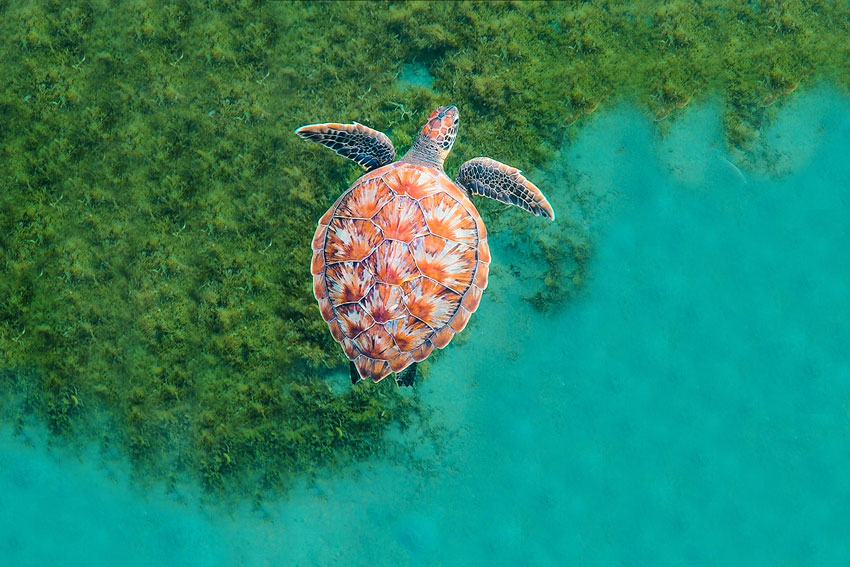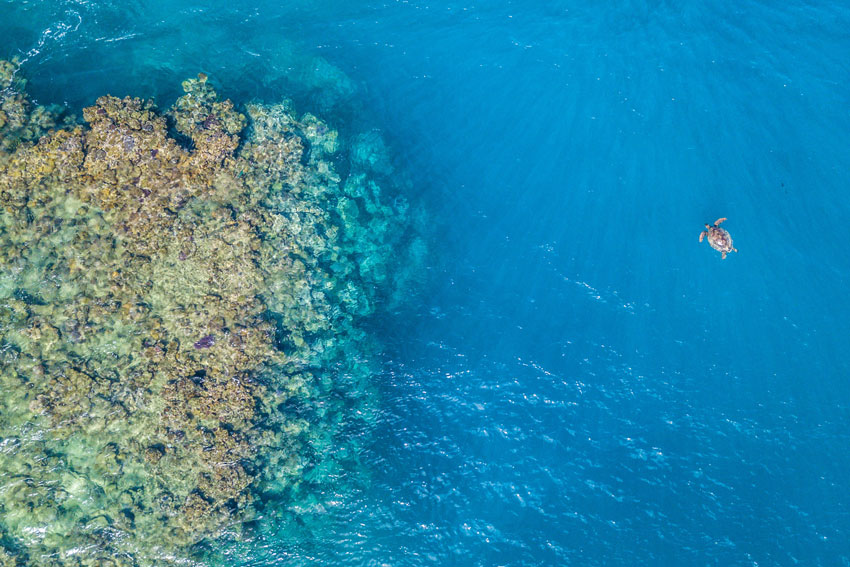Coral reefs are among the most diverse and productive ecosystems on Earth, providing a habitat for countless marine species. It plays a crucial role in maintaining the health and vitality of coral reefs is the sea turtle. Through their feeding habits and behaviors, sea turtles have developed a remarkable symbiotic relationship with coral reefs.
Let’s explore the fascinating interdependence between sea turtles and coral reefs, as well as the importance of preserving this delicate balance.
Guardians of Corals
Grazing on Seagrass
Sea turtles, particularly green turtles and hawksbills, rely on seagrass beds as a primary food source. As these herbivorous creatures graze on seagrass, they prevent it from overgrowing which can shade the coral reefs beneath, hindering the necessary process of photosynthesis that corals need to survive. By maintaining the balance of seagrass beds, sea turtles indirectly contribute to the health of nearby coral reefs.

Controlling Algae Growth
Our turtle friends also play a vital role in controlling algae growth on coral reefs. As they feed on seagrass, they inadvertently consume small pieces of algae that would otherwise settle on coral surfaces and hinder their growth. The presence of sea turtles helps keep algae levels in check, ensuring corals receive sufficient light for photosynthesis.
Gardeners of the Reef
Nutrient Cycling
These underwater gardeners serve as essential nutrient cyclers between coral reefs and seagrass beds. Turtles digest the plant matter and excrete nutrient-rich waste. When turtles defecate near coral reefs, they supply vital nutrients, such as nitrogen and phosphorus, to the reef ecosystem. These nutrients are essential for the growth and development of coral polyps.
See Also: Coral Reefs 101 – Coral Polyps >
Dispersing Coral Seeds
Sea turtles inadvertently aid in coral reproduction by dispersing coral larvae. After consuming coral polyps, sea turtles pass the undigested larvae in their feces, providing a means for corals to disperse and colonize new areas. This dispersal mechanism plays a critical role in the expansion and genetic diversity of coral reefs.

Consumers of Sea Sponges
Controlling Sponge Overgrowth
While sponges are natural inhabitants of coral reef ecosystems and serve important ecological functions, unchecked sponge growth can lead to detrimental effects on coral reefs. Sea turtles, particularly hawksbill turtles, help prevent excessive sponge growth on coral reefs by consuming certain sponge species. This control ensures a more balanced and diverse ecosystem by preventing sponges from outcompeting corals for space and resources.
Enhancing Biodiversity
Sponge populations can become so excessive they outcompete corals for space. As sea turtles feed on sponges, they create cleared areas on the reef substrate (the foundational material for coral development). These cleared patches provide suitable surfaces for coral larvae to settle and attach themselves, supporting the process of coral recruitment and expansion. By controlling sponge populations, they create ecological space for other organisms, including corals, to thrive. A diverse range of species ensures a more resilient and balanced ecosystem.
Mutual Benefits
Shelter and Protection
Coral reefs offer sea turtles protection and shelter during various life stages. Juvenile turtles find refuge within the reef structure, shielding them from predation. The complex reef systems also protect sea turtle nesting sites, ensuring the continuation of sea turtle populations. In return, sea turtles’ grazing activities contribute to the overall health and resilience of coral reefs.
Climate Change Resilience
Both sea turtles and coral reefs face significant threats from climate change. Rising ocean temperatures and ocean acidification pose a severe risk to coral reefs, leading to bleaching events and coral mortality. Sea turtles, with their mobility and adaptive behaviors, can serve as indicators of reef health. By preserving sea turtles and coral reefs, we enhance the resilience of both in the face of climate change.

Join the Conservation Movement, Protect Sea Turtles
The symbiotic relationship between sea turtles and coral reefs highlights the intricacies and marvels of nature’s delicate balance. Protecting and conserving these remarkable creatures is paramount for the long-term health and sustainability of coral reef ecosystems. By understanding and valuing the relationship between sea turtles and coral reefs, we can work towards ensuring their mutual survival for generations to come.

